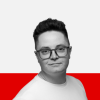Speakers at the Guy Carpenter Symposium, on the eve of the Baden-Baden reinsurance conference, unanimously expected hard-market conditions to continue at the 1 January 2024 reinsurance renewal.
Guy Carpenter EMEA and global capital solutions CEO Laurent Rousseau said this hard-market cycle is being driven by macroeconomic factors such as the Ukraine conflict, as well as the “normal risk factors” such as cyber and climate, adding to its potency.
That said, this hard market is not driven by a true capacity shortage but by reinsurers’ “willingness to deploy capital”, Rousseau noted.
“We see reinsurers wanting to make most of the market,” he said. “There has to be a price – but they want to take advantage of the market.”
The executive predicted that rates will at 1 January remain “fairly disciplined”, not least because of risks from natural catastrophes, manmade disasters and terror attacks or “acts of God, acts of man and acts of the Devil”.
The market correction at last year’s renewal has shifted more of the burden of risk from reinsurers to cedants, Rousseau said, with the median property cat treaty attachment return period having moved up 30% in Europe between 2022 and 2023.
He warned reinsurers not to focus “obsessively” on price, however, adding: “By driving prices too high there is a risk of decreasing the value of our products.”
As a result of these conditions, Rousseau said there will be an increase in alternative solutions, ranging from traditional P&L mechanisms and balance-sheet solutions such as adverse development covers and loss portfolio transfers to capital market solutions.
“There was a question between 2005 and 2010 whether ILS was the product of a low-interest-rate environment,” Rousseau noted, before adding that the cat bond market is growing strongly.
“I have confidence that trend will continue,” the CEO said adding that the roughly $40bn cat bond market is a “drop in the ocean” of fixed-term instruments, providing plenty of room for the market to grow.
He also said that, while this market cycle has not seen an influx of new reinsurance players on the same scale as other hard markets in the past, there is the potential for “more ad hoc structures that will run for a few years” entering the space.
Scor CEO Thierry Léger reiterated the reinsurer’s commitment to growing in the alternative and structured solutions space, as set out in its latest strategic plan.
The carrier has set a target to double its structured solutions premium by 2026 in a bid to help bridge the gap between capacity demand and the current offer from the reinsurance industry.
As of January 2023, Léger said, there was excess property cat demand of $65bn globally, and this is expected to increase.
He noted that, since 2017, the supply of alternative capital had been reasonably flat, as collateralised reinsurance reduced, ILWs and sidecars remained stable and cat bonds grew.
With intense investor need for liquidity, Léger said, it will not be easy to build up the alternative capital market – but he emphasised its attractiveness given that it does not correlate to other asset classes.
Lloyd’s CFO Burkhard Keese expanded on the theme of attracting investors to (re)insurance generally, and the Lloyd’s market specifically, mainly through the London Bridge vehicle.
“In the last 10 years we have focused too much on the needs of customers and not on the needs of investors,” he said.
At the same time, Keese said, last year’s US cat renewals were a “car crash”, with cedants facing difficulty in security capacity for wind or California wildfire.
Keese said underwriting businesses need access to a diversified pool of both temporary and permanent capital, while investors need non-correlated, diverse investments.
Other alternative asset classes, however, produce higher returns than (re)insurance, and with a greater degree of transparency, Keese said.
To make (re)insurance a more viable investment opportunity, Keese said, the market must become better at measuring its success.
“Underwriting for commercial and specialty is a bit of a black box,” he said.
“We don’t do what normal asset managers do.”
He said Lloyd’s is working towards a mechanism whereby it can index the performance of various lines of business, against which individual businesses can track their own portfolios.
This will allow the creation of a secondary investment market, which could be 20-30 times bigger than the (re)insurance market itself, Keese explained.
“This is the future of the industry if we get it right,” he said.
London Bridge is an attempt to move forward with the creation of a streamlined investment process into the Lloyd’s market, and Keese said at present London Bridge II has a pipeline of $500mn-$1bn.
In the near future, Keese said London Bridge will feature its first listed vehicle, its first cat bond, its first stop-loss treaty, and its first structure that allows withdrawal of funds after one year, rather than three.


